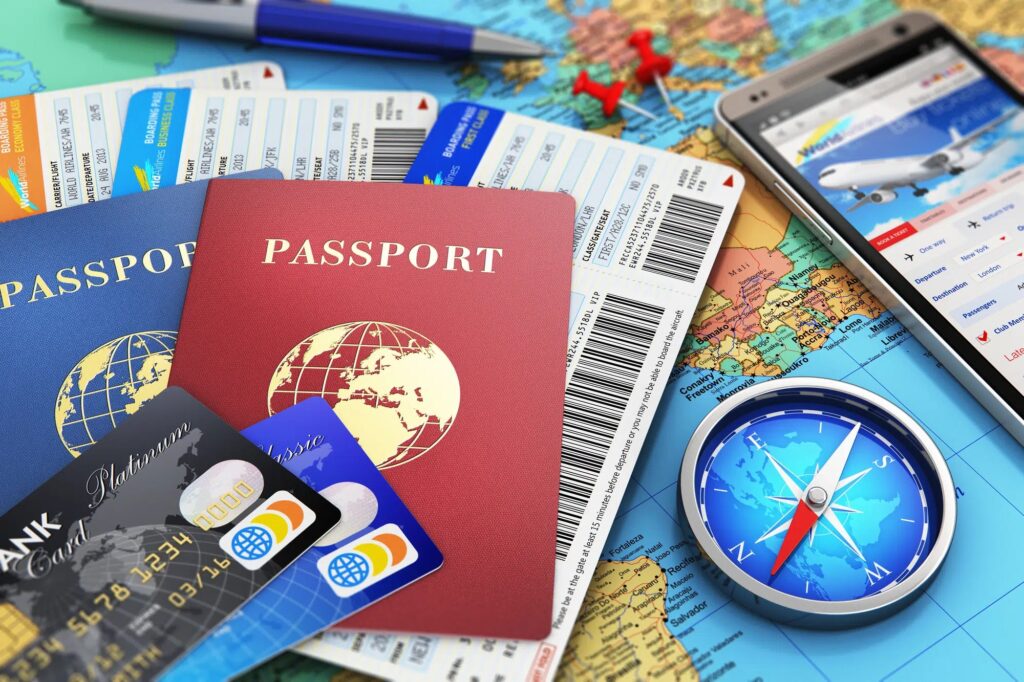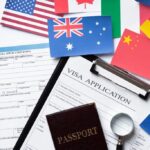Dream of working abroad? Discover how to get a free work visa for Europe and the USA in 2025. Our ultimate guide reveals government programs, company sponsorships, and legal hacks to land your dream job overseas without paying fees.
Introduction: Your Dream of Working Abroad is Closer Than You Think
The idea of launching a career in a bustling American tech hub, enjoying the work-life balance of a European city, or immersing yourself in a new culture is a powerful dream for millions. But for many, this dream seems out of reach, shrouded in complex bureaucracy, intimidating costs, and the myth that international work visas are only for the ultra-wealthy or exceptionally gifted.
What if we told you that it is entirely possible to obtain a work visa for countries like Germany, Portugal, the Netherlands, or even the United States without paying a single dollar or euro in government application fees?
The keyword here is “free.” While you might encounter costs for essential services like legal advice, document translation, or mandatory health insurance, the core government visa application fee can often be $0. This isn’t a loophole; it’s about understanding the system, knowing which specific programs and paths to target, and strategically positioning yourself to qualify.
This definitive guide is your roadmap. We will demystify the process, debunk the myths, and provide a clear, actionable blueprint for securing a fee-waived work visa for Europe and the USA in 2025. We’ll cover:
- The Truth About “Free” Visas: What “free” really means in the immigration context.
- The Golden Ticket: Employer Sponsorship: How to get a company to not only hire you but also cover all your visa costs.
- European Gems: Specific countries with digital nomad visas, freelance visas, and job-seeker visas that have low or no fees.
- The USA Paths: Navigating the complex U.S. system for a fee-waived H-1B, O-1, or L-1 visa.
- Government Programs: Official government-sponsored programs that cover visas and even relocation for in-demand professionals.
- A Step-by-Step Action Plan: What you need to do in the next 6 months to make 2025 your year.
This journey requires research, preparation, and persistence—but the reward of an international career is worth the effort. Let’s begin.
Section 1: Demystifying the “Free” Work Visa – What It Really Means
Before we dive into specific countries, it’s crucial to set realistic expectations. When we talk about a “free visa,” we are primarily referring to having the government application fee waived or paid for by a third party.
You will likely still have to budget for some costs, which can include:
- Legal Fees: While you can self-file, an immigration lawyer’s help is invaluable for complex cases. Some employers cover this.
- Translation & Notarization: Official documents often need certified translations.
- Mandatory Health Insurance: A requirement for nearly all visa types.
- Biometrics Appointment: A small fee for photo and fingerprints.
- Travel & Relocation: Flights, shipping, and initial accommodation.
- Proof of Financial Means: You may need to show bank statements proving you can support yourself initially.
A “free visa” strategy, therefore, focuses on two primary avenues:
- Targeting visa categories that have no government filing fee.
- Getting your future employer to agree to sponsor you and cover all visa-related costs as part of your hiring package.
This guide is focused on helping you achieve both.
Section 2: The European Dream – Countries with Accessible Visa Paths
Europe is a mosaic of immigration policies. While the EU allows for freedom of movement for its citizens, non-EU nationals must navigate individual country rules. Several countries have created attractive, low-cost pathways for skilled talent.
1. Germany: The Job Seeker Visa & EU Blue Card
Germany’s robust economy has a massive demand for skilled workers, especially in technology, engineering, and healthcare.
- The Path:
- Job Seeker Visa: This is a 6-month visa that allows you to live in Germany while you look for a job. The key: it has a very low application fee (around €75-€100), which can be considered virtually free compared to the opportunity. Once you find a job, your employer helps you convert it to a work permit.
- EU Blue Card: For highly-skilled professionals with a university degree and a concrete job offer with a minimum salary threshold (2025’s threshold will be around €45,000 – €58,000 depending on the profession). The fee is around €140.
- How to Make it “Free”: Secure a job offer from a German company before you apply. In negotiations, explicitly request that they cover the EU Blue Card application fee and any associated legal costs as part of your relocation package. For tech talent, this is a common request.
- Actionable Step: Use LinkedIn to connect with recruiters at German companies like SAP, Siemens, Zalando, and countless thriving startups. State in your profile: “Seeking opportunities in Germany, require visa sponsorship.”
2. Portugal: The Digital Nomad & Passive Income Visa
Portugal is famously welcoming to remote workers and entrepreneurs.
- The Path:
- D7 Passive Income Visa: For those with sustainable passive income (e.g., rentals, dividends, pensions). Requires proof of income. Application fee is modest (approx. €90 for residence visa, €83 for permit).
- Digital Nomad Visa: For remote workers employed by or with clients outside of Portugal. Requires proof of income (likely ~€3,300/month in 2025). Fees are similar to the D7.
- How to Make it “Free”: The fees are already low. The “cost” is more about proving sufficient funds. The visa itself is one of the most accessible and affordable in Europe.
- Actionable Step: If you have a stable remote job, start gathering 6 months of bank statements and invoices. Begin researching Portuguese tax obligations for non-habitual residents (NHR), which can offer significant benefits.
3. The Netherlands: The Highly Skilled Migrant Permit
The Dutch system is incredibly employer-driven and efficient for qualified candidates.
- The Path:
- Highly Skilled Migrant Permit: If a company recognized by the Dutch immigration authority (IND) sponsors you, the process is fast-tracked. There is no government application fee for the migrant themselves. The employer pays a fee (approx. €350).
- How to Make it “Free”: This is the holy grail. The government fee is $0 for you. Your entire mission is to get a job offer from a “recognized sponsor” company. A list of thousands of these companies is publicly available on the IND website.
- Actionable Step: Search the IND’s published list of recognized sponsors. Target your job search exclusively at these companies, as they are experienced and set up to hire internationally.
4. Czech Republic: The Freelance Visa (Živnostenský List)
A popular option for entrepreneurs and freelancers in the heart of Europe.
- The Path:
- Trade License (Živno): You apply for a long-term visa for the purpose of business. You need to obtain a trade license for your profession (which has a small admin fee) and prove sufficient funds to support yourself. The visa application fee is around €80.
- How to Make it “Free”: The costs are inherently low. The challenge is navigating the bureaucratic process, which often requires a local lawyer (costing ~€1,000).
- Actionable Step: Research if your profession is on the “free trade” list eligible for the trade license. Join Facebook groups like “Expats in Prague” to find recommended legal services.
Section 3: The American Dream – Navigating the U.S. Immigration System
The U.S. system is famously complex and expensive, but not impossible to navigate with a “fee-free” goal.
1. The H-1B Visa (Specialty Occupations)
This is the most common visa for U.S. professional jobs.
- The Challenge: It’s a lottery with odds often below 30%. The total costs (filing fees + legal fees) can exceed $5,000. By law, the employer must pay the mandatory filing fees. They cannot pass these on to the employee.
- How to Make it “Free”: Your goal is to find an employer who is not only willing to sponsor you but also to cover the optional “Premium Processing” fee and any legal fees they might incur. This is a standard negotiating point for in-demand tech, finance, and engineering roles.
- Actionable Step: Target large tech companies (Google, Amazon, Apple, Microsoft) and finance firms (JPMorgan, Goldman Sachs) that have dedicated immigration departments and routinely sponsor H-1Bs. Apply aggressively.
2. The O-1 Visa (Individuals with Extraordinary Ability)
This is for individuals at the top of their field in sciences, arts, education, business, or athletics.
- The Path: You must provide extensive evidence of sustained national or international acclaim (awards, publications, high salary, judging the work of others, etc.). The government fee is $460.
- How to Make it “Free”: While the fee is low, the legal and documentation costs are high ($5,000-$10,000+). Your strategy is to get a U.S. employer or agent to petition for you and agree to cover all associated costs.
- Actionable Step: Start building your “extraordinary ability” portfolio now. Secure media mentions, win awards, get letters of recommendation from recognized experts, and gather evidence of your unique impact on your industry.
3. The L-1 Visa (Intracompany Transferee)
If you work for a multinational company outside the U.S., you can be transferred to a U.S. office.
- The Path: You must have worked for the company for at least one continuous year within the last three years. The government filing fee is $460.
- How to Make it “Free”: This is a corporate transfer. The company will always cover all costs, including legal fees, relocation, and sometimes housing. This is one of the most reliably “free” paths for the employee.
- Actionable Step: Get a job with a prominent multinational company in your home country. Excel in your role and express your desire for an international assignment to your manager early on.
Section 4: Government & Global Talent Programs That Cover Costs
Some countries actively recruit talent and will facilitate your move.
- Canada’s Global Talent Stream (GTS): While not the USA, it’s a major competitor for talent. It offers 2-week work permit processing for in-demand tech workers. The process is employer-driven, and costs are typically covered by the company.
- France’s Tech Visa: A simplified, fast-track scheme for tech founders, employees, and investors to get a residence permit. Fees are low, and the ecosystem is welcoming.
- Global Remote Work Villages: Places like Croatia, Malta, and Estonia have launched digital nomad programs to attract remote workers who will contribute to the local economy. Fees are typically under €100.
Your 6-Month Step-by-Step Action Plan for a 2025 Visa
Months 1-2: Research & Self-Assessment
- Identify your target country based on your skills, language, and lifestyle.
- Research the specific visa you qualify for. Bookmark the official government immigration website (.gov domain).
- Audit your skills. Are you in a high-demand field? If not, consider upskilling with online courses.
Months 3-4: Build Your Profile & Network
- Optimize your LinkedIn and CV for an international audience. Clearly state your visa requirements.
- Start connecting with recruiters and employees at target companies in your desired country.
- For freelance/entrepreneur visas, build a client base and documented income stream.
Months 5-6: Execute the Job Search or Application
- Begin applying for jobs aggressively. In cover letters, be transparent: “I require visa sponsorship for [Country].”
- Start gathering documents: passport, degree certificates, bank statements, tax returns.
- For non-job seeker visas (e.g., Portugal D7), begin preparing your application package.
Conclusion: Your Global Career Awaits
Getting a “free” work visa is not about magic tricks; it’s about strategy, preparation, and knowing where to look. It’s about transforming yourself into a candidate so valuable that an employer across the ocean is eager to invest in your relocation. It’s about identifying countries that are actively rolling out the red carpet for your skills.
The process is a marathon, not a sprint. It requires patience and resilience. But by focusing on the paths outlined in this guide—employer sponsorship in the Netherlands and USA, low-fee freelance visas in Portugal and Czechia, or structured programs like Germany’s Job Seeker visa—you can absolutely achieve your goal of working abroad with minimal out-of-pocket costs.
Start your journey today. Your international career in 2025 begins with the research you do right now.


